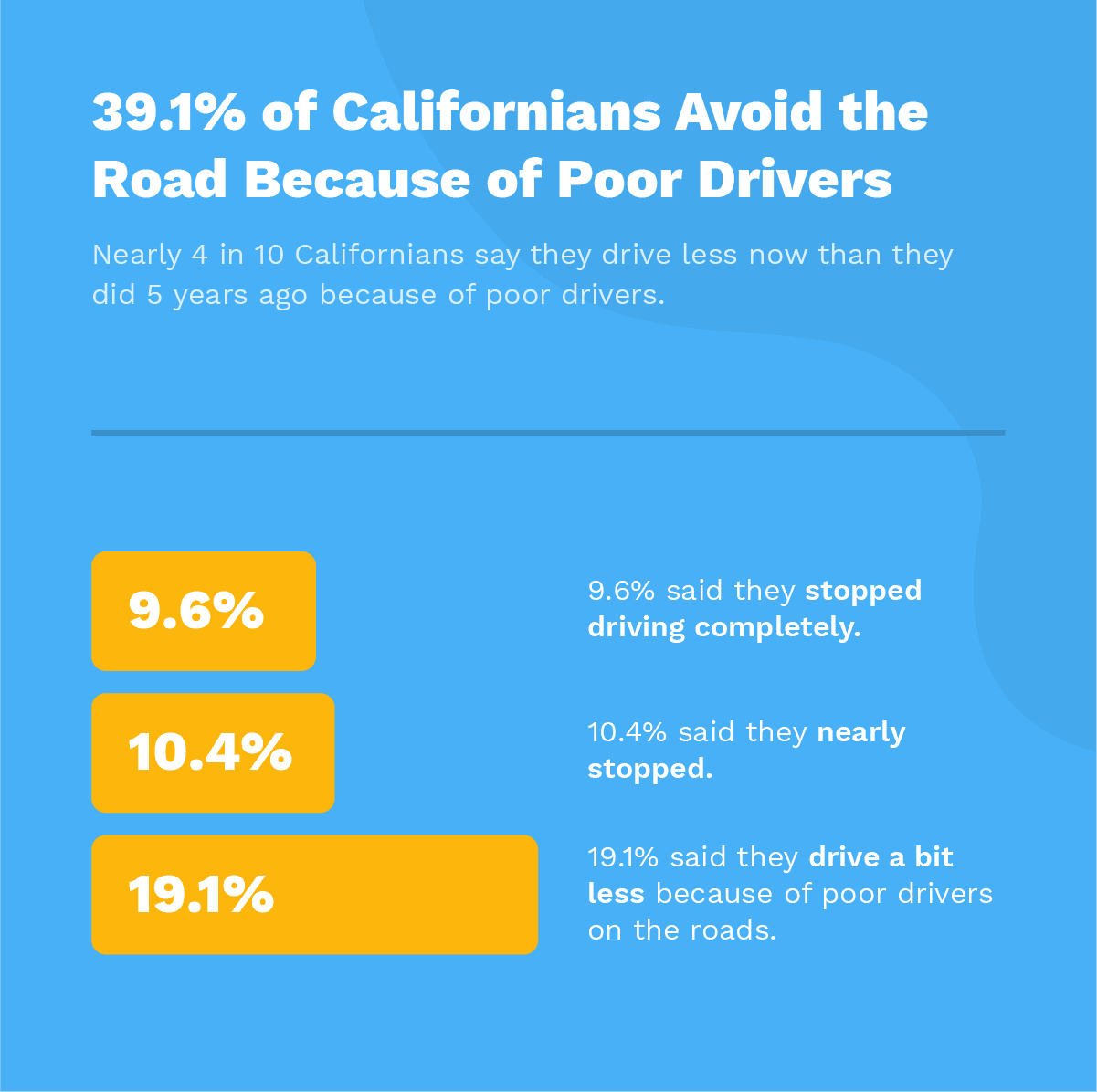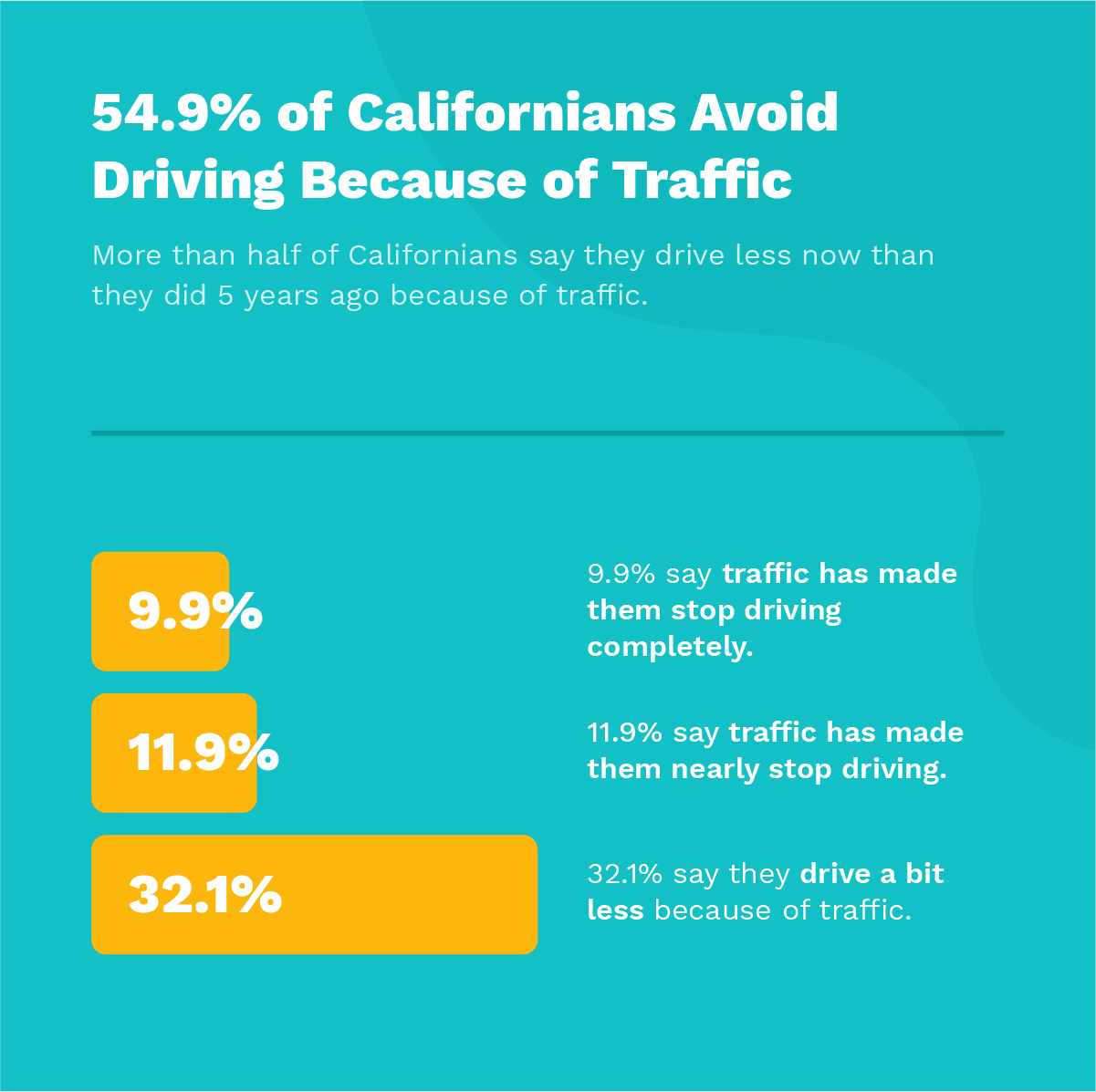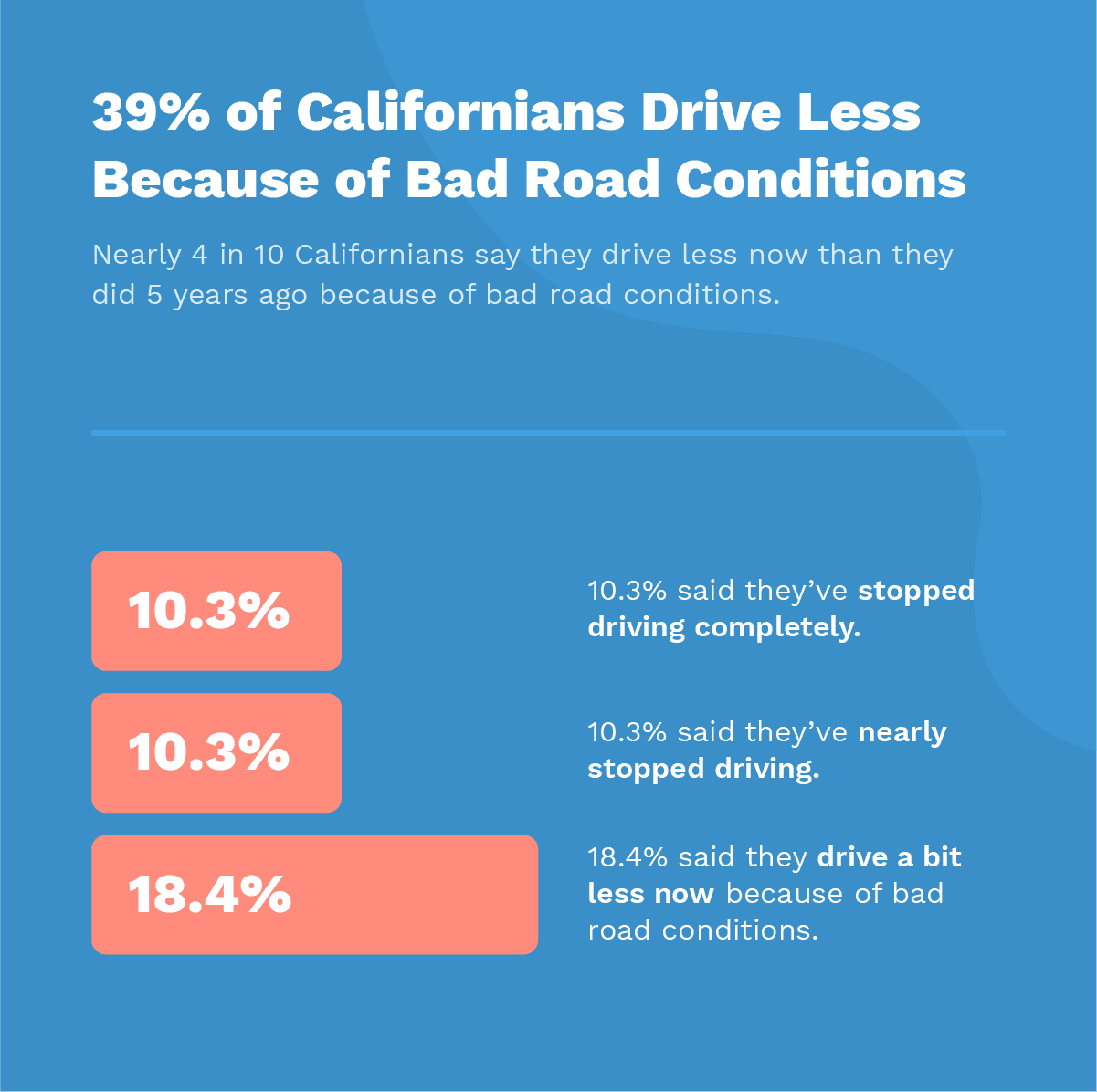Whether you’re living in or visiting California, you may have noticed that many drivers behave unpredictably and sometimes break all the rules. This sometimes leaves people wondering: why are California drivers so bad?
Well, the answer isn’t cut-and-dried. While some drivers are more skilled than others, broader issues, such as California’s heavy traffic, elevated DUI rates, and enforcement gaps, also play a role.
Let’s take a closer look at these factors, their influence on driving behavior, and the steps you can take to improve road safety.
California Driving by the Numbers
According to a 2024 LendingTree study, California drivers are actually pretty awful. The state has the second-highest accident rate and the second-highest DUI rate nationwide, though the number of speeding incidents is lower than average.
Here’s what the numbers say:
- Between 2023 and 2024, California reported 39.7 crashes per 1,000 drivers, the second-highest rate after Massachusetts.
- During the same period, it recorded 3.5 DUI arrests per 1,000 drivers, ranking second after the District of Columbia.
- In 2023, 4,061 people died in motor vehicle crashes on California roads, the highest number of traffic fatalities of any state, according to the Insurance Institute for Highway Safety (IIHS).
- That same year, California recorded 1.28 deaths per 100 million miles, slightly above the national average of 1.26.
- About 38% of fatally injured drivers had a blood alcohol content (BAC) of 0.08% or higher, per the IIHS.
- In 2024, Bankrate ranked California as the worst state in terms of traffic congestion.
- In 2021, the Golden State ranked sixth nationwide for how often drivers Googled “speeding ticket” or “traffic ticket” relative to searches for gasoline, hinting at how frequently they run into trouble on the road.
- In a 2023 survey by UC Berkeley, most California drivers (76.6%) expressed concern about speeding and aggressive driving, while 68.8% were worried about drunk driving.
- 30.6% of respondents showed concern about drivers using their phones behind the wheel.
- Meanwhile, 22.9% told UC Berkeley they feared other forms of distracted driving, such as eating or fiddling with the radio while on the road.
- In 2022, distracted driving accounted for 3% of all traffic fatalities in California, reports UC Berkeley.
- Los Angeles ranks second nationwide for road rage, surpassed only by Houston, Texas. San Francisco also has an above-average road rage score, according to a study by Angel Reyes & Associates.
- California also topped Forbes’ 2024 list for aggressive driving, with the highest score across nine road rage metrics.
- 47.5% of California drivers surveyed by Forbes said another driver intentionally cut them off.
- 32% reported being yelled at, insulted, cursed at, or threatened on the road.
- Nearly 61% said they’ve been tailgated by other drivers.
In 2021, we surveyed 1,000 California residents. Of those, 39% said they drive less than they did in 2016 because of poor drivers. Among them:
- 19.1% drive a bit less due to unsafe behavior on the roads.
- 9.6% stopped driving completely.
- 10.4% nearly stopped.

However, it’s not always the driver’s fault. Heavy traffic, poor road conditions, and California’s car-centric infrastructure all come into play, causing drivers to behave irrationally.
Traffic school can help you keep a clean driving record, prevent insurance increases, and more!
7 Reasons California Drivers Are So Bad
Everyone who’s driven in California, especially during rush hour, has a story about being forced to share the road with an aggressive, road-ragey, or just bad driver. But often, it’s not just about driving skills. The situation a driver is in can influence their actions behind the wheel.
Here are some of the factors that contribute to reckless behavior on California’s roads.
1. More People, More Problems
Traffic congestion combined with poor road conditions often pushes drivers to their limits, leading to erratic behavior. Driving in high traffic areas also increases stress, which can lead to a negative mood, frustration, and road rage.
In 2024, Los Angeles ranked as the third most congested urban area in the U.S., with drivers losing 88 hours and an average of $1,575 to traffic delays. According to our 2021 study, nearly 55% of Californians avoid driving because of traffic.

Road conditions don’t make things any easier. In our 2021 survey, 39% of respondents said they drive less because of poor road quality.

2. More Distracted Driving
Heavy traffic is a major contributor to accidents involving distracted driving, road rage, unsafe lane changes, or risky U-turns. When you’re stuck in traffic for hours, it’s easy to lose focus and engage in activities that take your attention away from the road.
This kind of behavior has little to do with your driving ability. It’s a response to the mental and physical fatigue caused by traffic congestion.
3. A Flawed Legal System
Another problem is the point system used by the California Department of Motor Vehicles (DMV), which often fails to keep reckless drivers off the road—even after repeated violations.
Under this system, a driver’s license is suspended for six months if a driver accumulates:
- 4 points within one year
- 6 points within two years
- 8 points within three years
However, the DMV doesn’t automatically suspend licenses. It first issues a warning letter, giving drivers time to improve their records—or rack up more violations before facing consequences.
Plus, the DMV routinely restores driving privileges as soon as the minimum suspension period ends. This means long-term patterns of reckless behavior sometimes go unaddressed, especially if they are spread out enough to avoid suspension at all.
California’s fragmented judicial infrastructure further adds to the problem. As CalMatters explains, the state lacks a centralized court system, preventing the judiciary and the DMV from coordinating records. As a result, many drivers charged with misdemeanors or felonies continue to hold valid licenses.
4. A Car-Centric Infrastructure
Many California cities are built for cars, not people, contributing to heavy traffic, long commutes, and over-reliance on personal vehicles. This often leads to congestion and its aftermath, such as road rage, frustration, lost hours, and even diminished life satisfaction.
Many roads are also designed like mini-highways, featuring wide lanes and few crosswalks. They are designed for speed, even in areas meant for local traffic.
5. The Lack of Parking Spaces
Studies have found a direct link between on-street parking and elevated crash risk. The time spent looking for parking also increases cognitive load and contributes to driver stress, affecting driving behavior. The result? Elevated fatigue, anxiety, irritation, and a higher likelihood of mistakes.
In our survey, 19% of drivers said they struggle to find public parking, while 17% expressed concern about having nowhere to keep their car overnight. As a result, many drivers resort to illegal parking, often in spots that obstruct traffic flow.
6. Increased DUI Rates
In 2022, 33% of all traffic fatalities on California’s roadways involved a drunk driver—that’s slightly higher than the national average of 32%. This trend remained consistent in 2023, when California recorded 1,355 alcohol-related traffic fatalities, accounting for 33% of all fatal crashes statewide.
Six of the 10 largest U.S. cities with the highest DUI rates are also located in California. These include:
- San Jose: 3.68 DUIs per 1,000 drivers
- Sacramento: 3.55 DUIs per 1,000 drivers
- Fresno: 3.31 DUIs per 1,000 drivers
- Long Beach: 2.83 DUIs per 1,000 drivers
- Bakersfield: 2.78 DUIs per 1,000 drivers
- Oakland: 2.76 DUIs per 1,000 drivers
See: Infographic: Drunk Driving Statistics
7. More Bad Driving Begets More Bad Driving
When risky behavior becomes common, it starts to feel normal. Over time, this “everyone does it” mentality lowers the social pressure to follow the rules, making unsafe habits like tailgating, speeding, or weaving across lanes more widespread. Even responsible drivers can fall into this trap, perpetuating the cycle of traffic offenses.
How You Can Help
As a California resident, you can help keep California’s roads safer (and reduce the number of bad drivers) by taking a few key steps:
Report Dangerous Driving Behaviors
Call 311 to report impaired or reckless drivers, unsafe road conditions, or traffic incidents. You may also use apps like Citizen or Neighbors by Ring to share real-time updates with nearby residents and fellow road users.
Support Traffic Safety Programs
Over the years, California has introduced traffic safety initiatives to help make driving safer. This includes red-light cameras and speed cameras, sobriety checkpoints, and the 2025 DUI reform, which lowered BAC limits, imposed stricter penalties, and made ignition interlock devices (IIDs) mandatory for DUI offenders.
Drivers can support these programs by sharing feedback with local planners or traffic safety organizations. You may also take part in community safety campaigns, and encourage your family and friends to do the same.
Lead by Example
Follow traffic laws, act responsibly on the road, and show courtesy toward other drivers. They might follow your lead! You may not be able to prevent traffic jams or stop other drivers from making mistakes, but you can still make a difference. You can’t expect others to signal when turning, obey traffic signs, or yield the right of way if you don’t do it yourself.
FAQs About California Drivers
What else would you like to know about California drivers? Below are the answers to some questions you may have.
What is the leading cause of traffic collisions in CA?
Speeding is the leading cause of car crashes in California, followed by alcohol use and distracted driving. In 2024, speeding contributed to 77,822 accidents—nearly half of all collisions statewide.
What is the stereotype of drivers in California?
California drivers are often perceived as aggressive, impatient, and careless. For example, L.A. drivers tend to engage in risky behaviors like tailgating and lane weaving, which are typically associated with aggressive driving. However, we know from the data that a lot of this behavior stems from overcongestion and other poor driving conditions.
What is a good California driver?
A good driver, whether in California or anywhere else, is someone who obeys traffic laws and shows consideration for other road users.
You might also define someone as a good California driver if they qualify for the California good driver discount. This 20% insurance discount applies automatically to any drivers who meet the following criteria:
• Licensed 3+ consecutive years (U.S. or Canada).
• Max 1 DMV point in the last 3 years.
• No major convictions (DUI, reckless, etc.) in the last 10 years.
• No at-fault crashes causing injury or death in the last 3 years.
Methodology
Using Pollfish.com, we surveyed 1,000 current California residents in late July, 2021. To proceed with the survey, respondents had to answer that they either currently drive, or have regularly driven at some point in the last five years.
Survey respondents were 46.8% male, and 53.2% female.
They were:
- 2.8% ages 16-17
- 16.4% ages 18-24
- 21.8% ages 25-34
- 30.1% ages 35-44
- 11.7% ages 45-54
- 17.2% ages 55 or older
